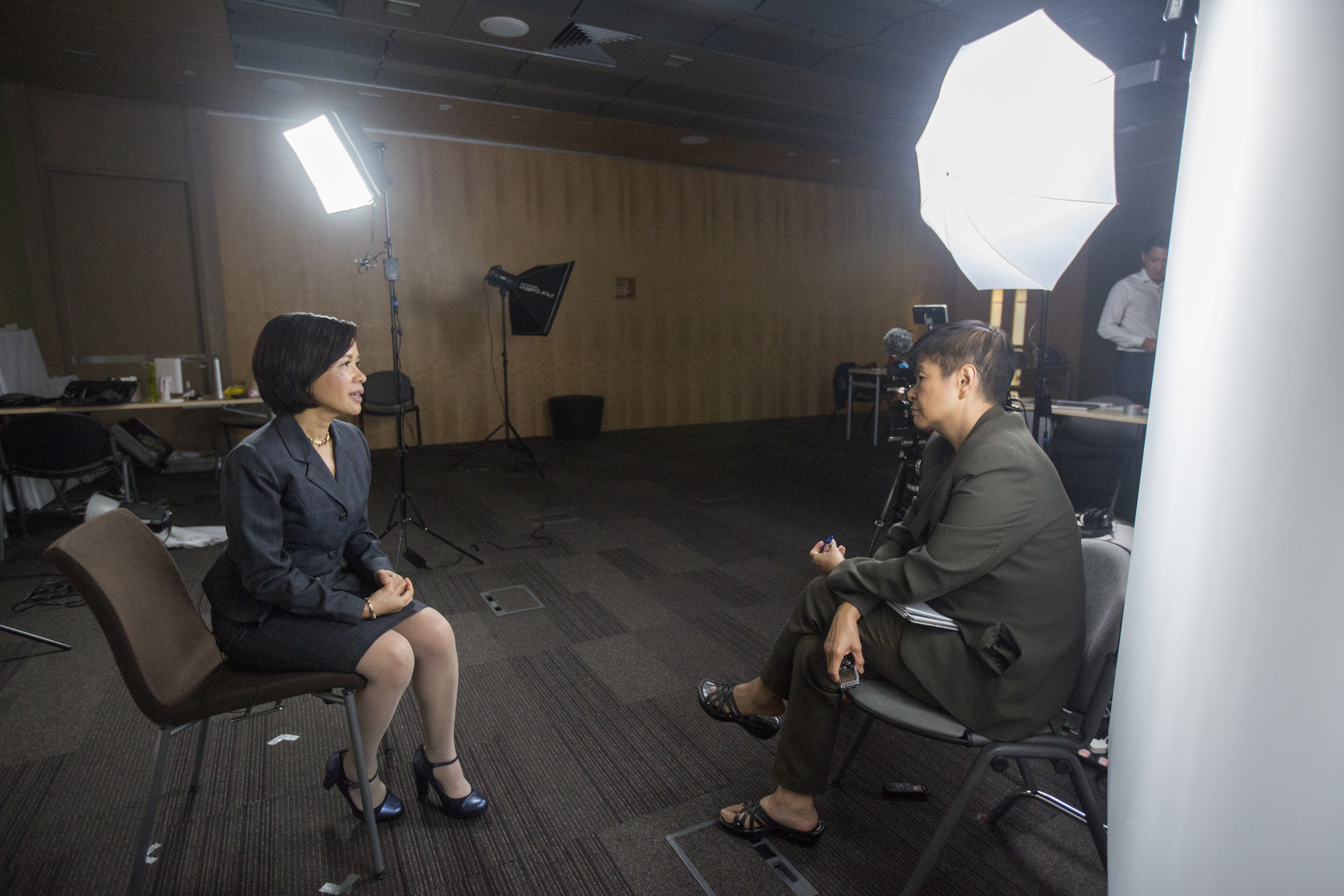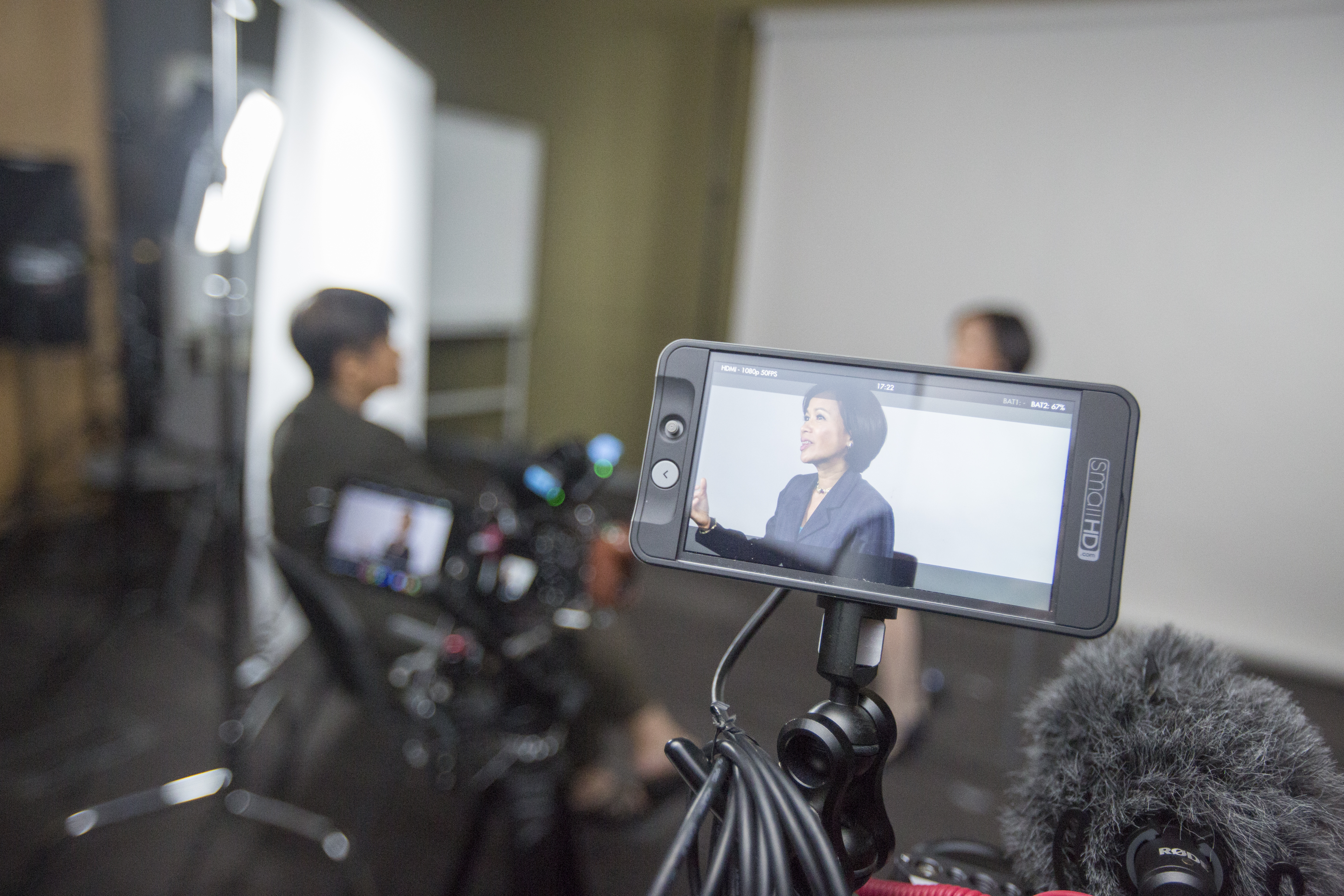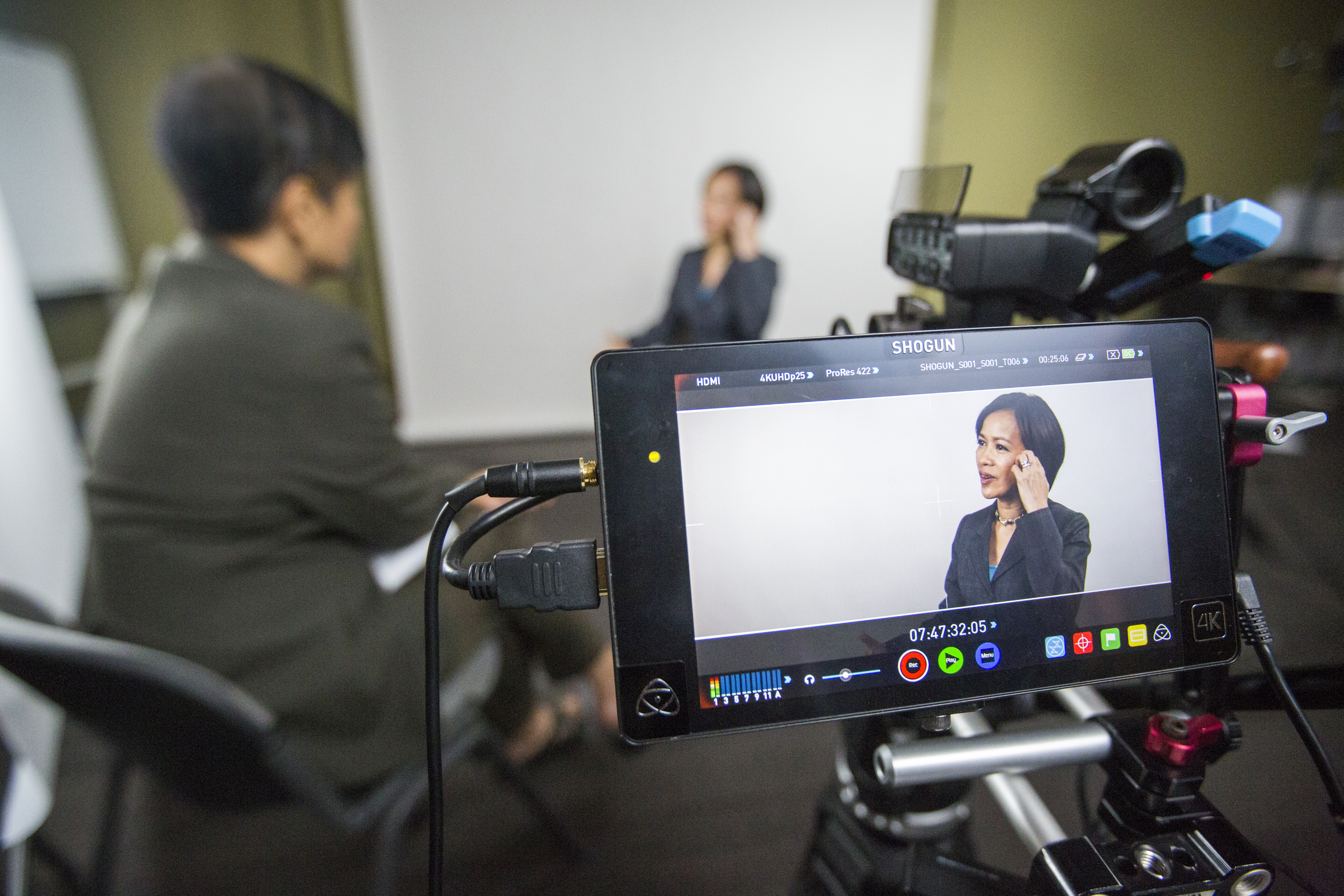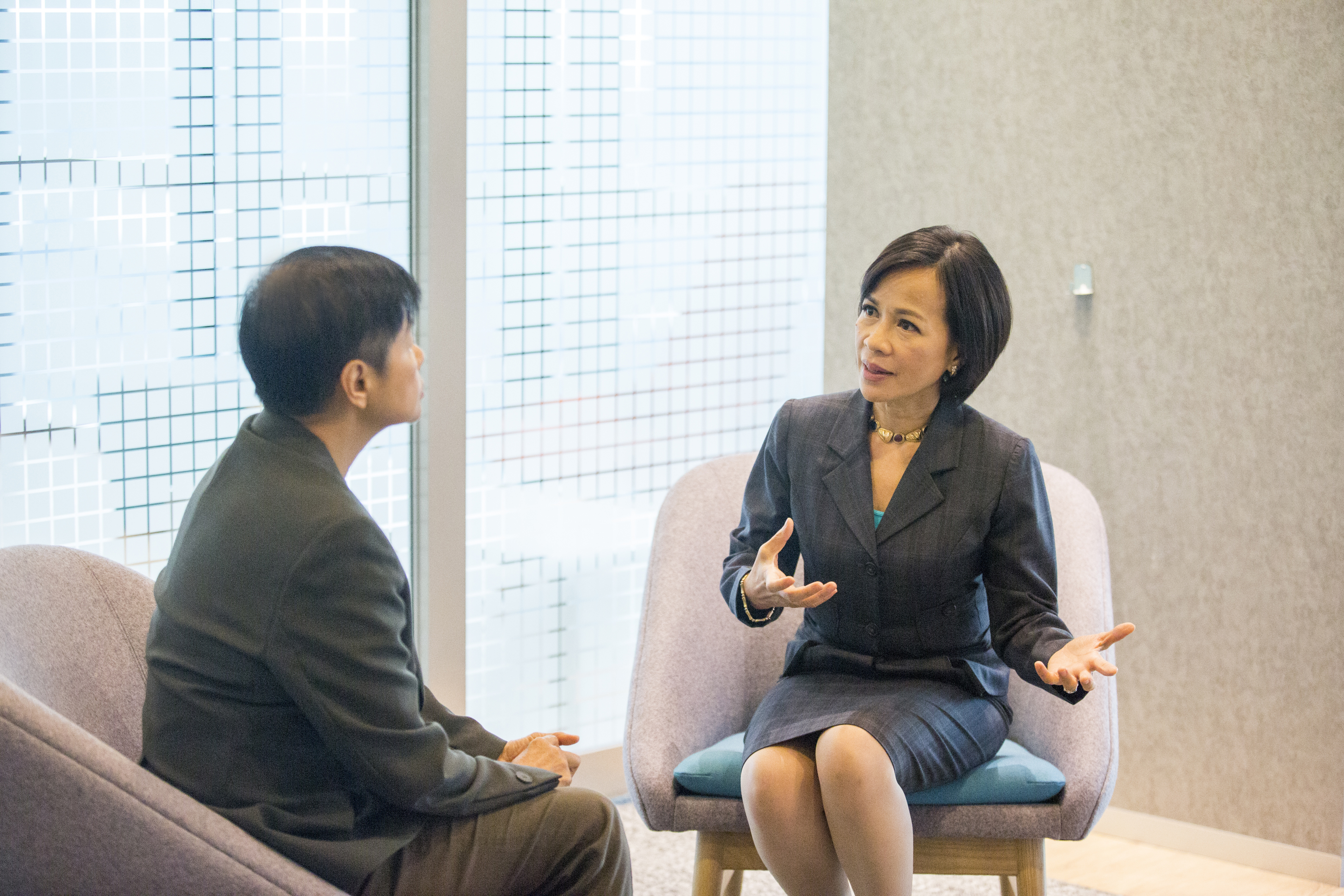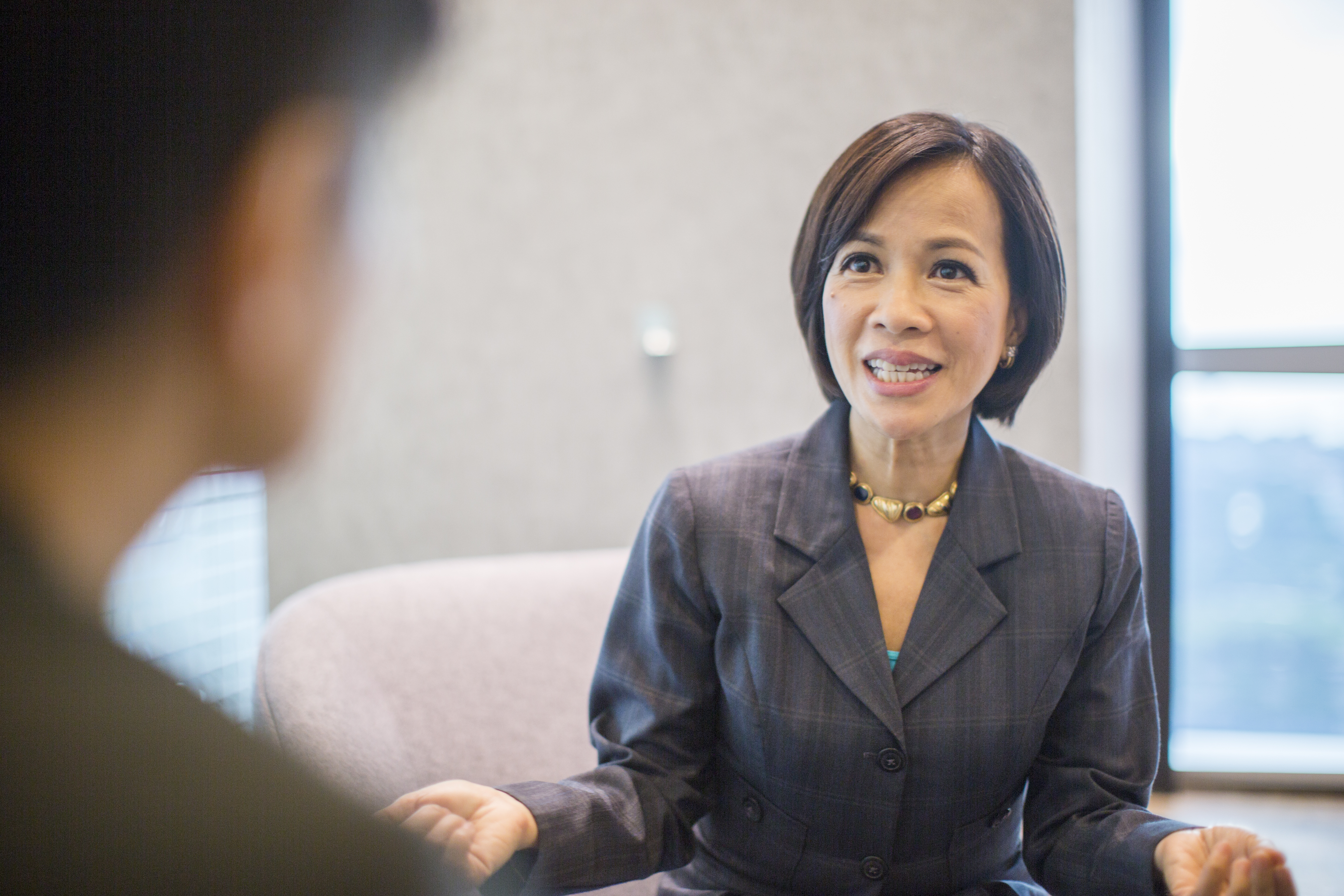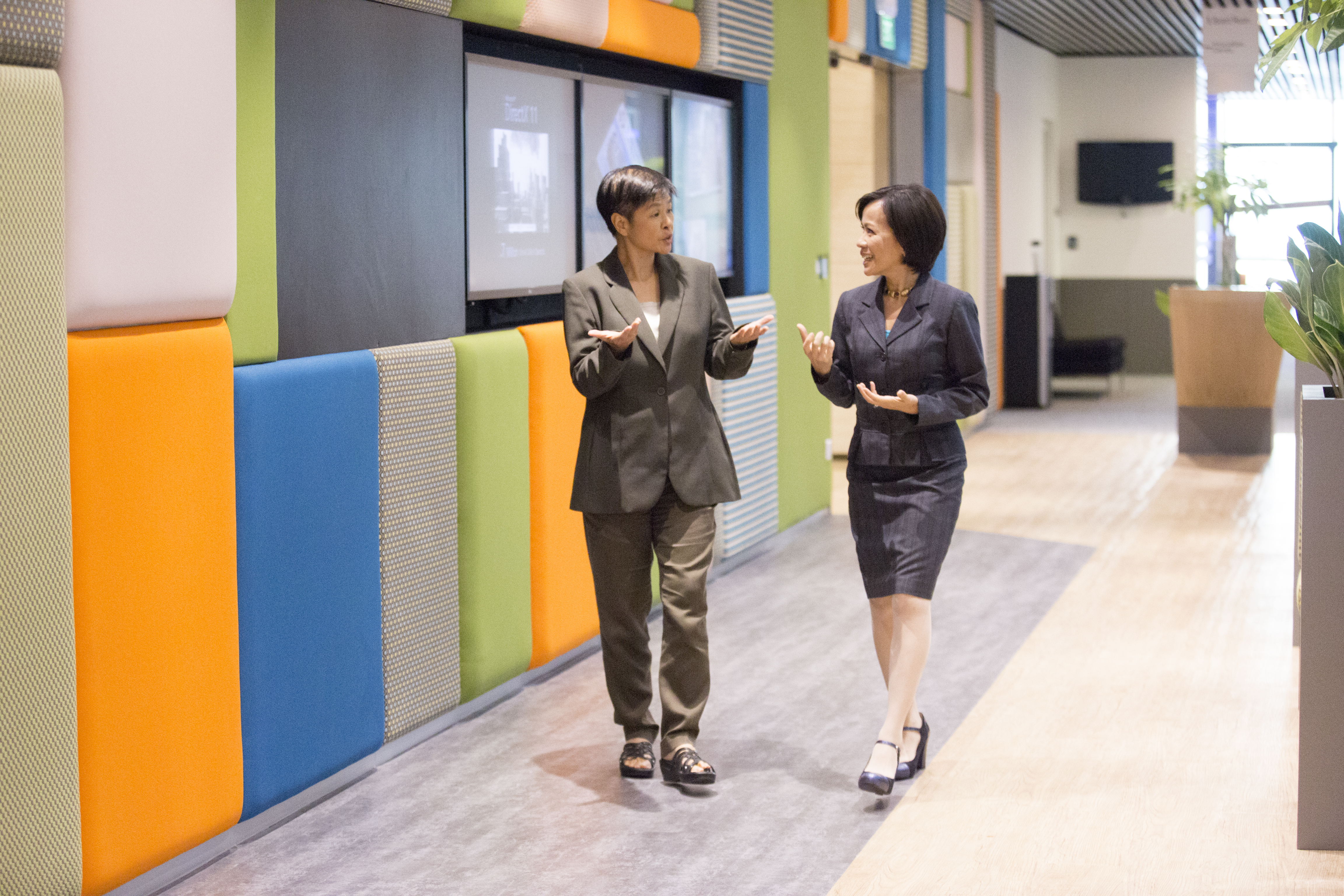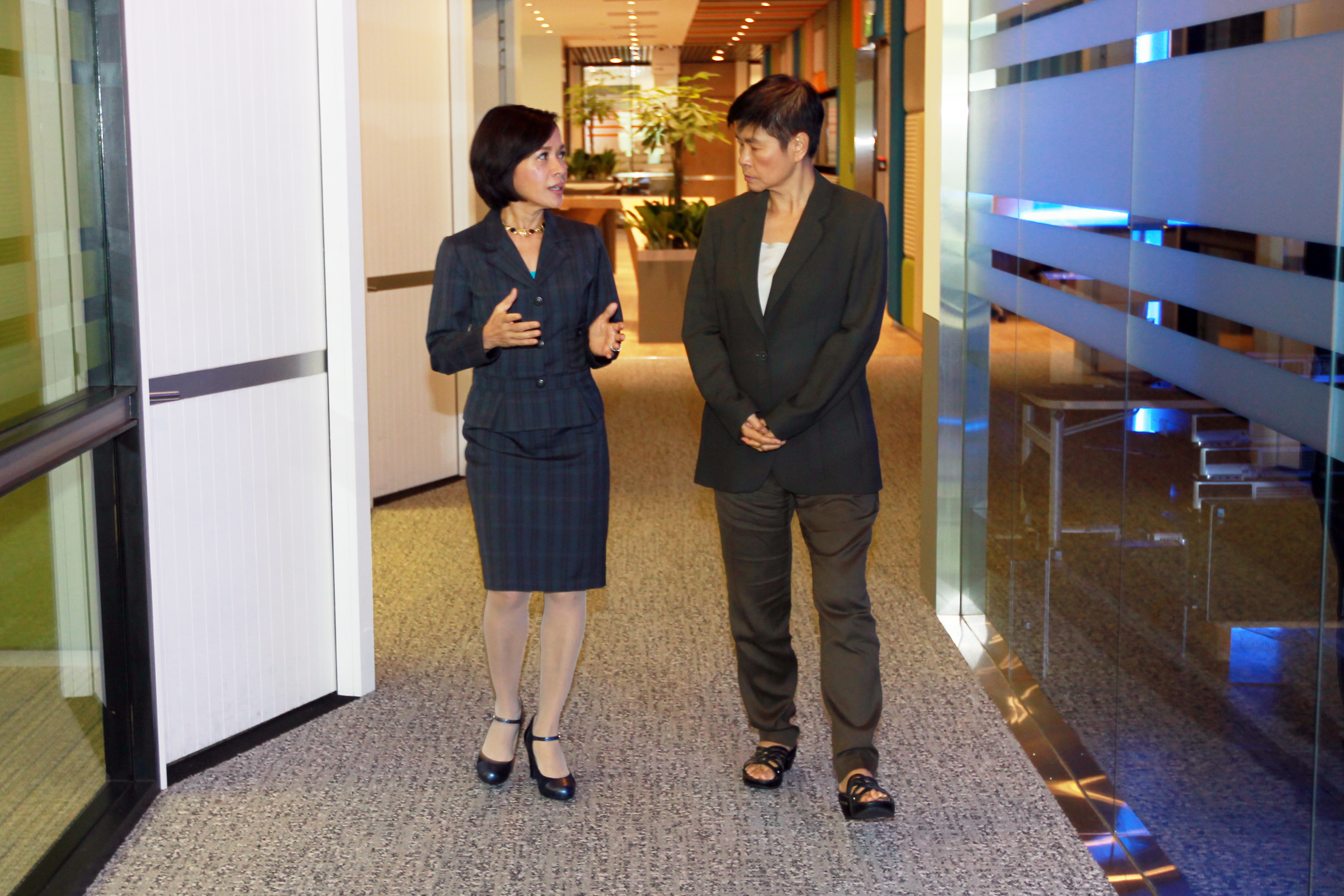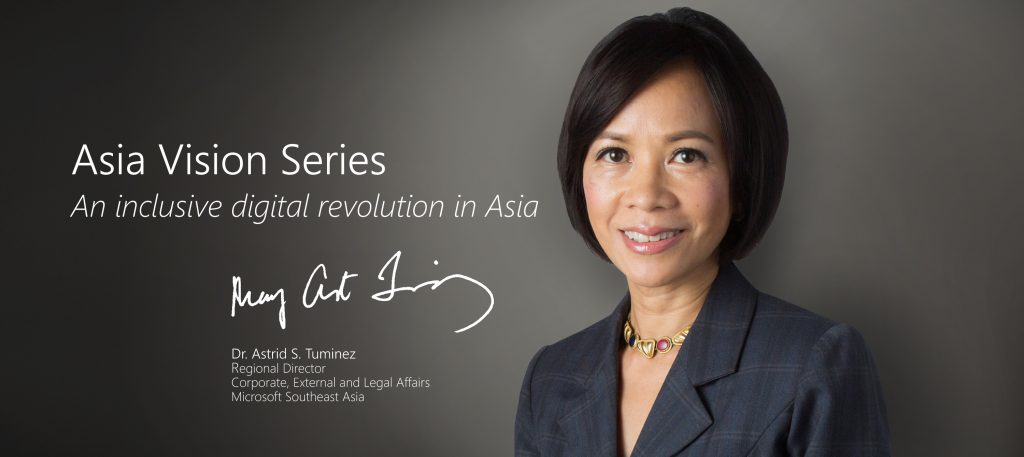
Asia Vision Series: Dr. Astrid S. Tuminez
In our Asia Vision Series, we dive into key industry trends and issues with subject matter experts and visionaries in the region. In this interview, Grace Chng, one of Singapore’s most senior tech writers, speaks with Dr. Astrid S. Tuminez, Microsoft’s regional director for Corporate, External and Legal Affairs for Southeast Asia. Tuminez shares how technology, digital literacy and education are critical for succeeding in the 4th Industrial Revolution.
Can Asia address the inequalities of growth?
Growing up in the slums of the Philippines, Dr. Astrid S. Tuminez did not have the luxury of eating regular breakfast as a child. She was one of seven kids and life was hard for her family. She had only one pair of socks, which she would wash once a week. When it rained, she plugged the holes in her shoes with lollipop wrappers. When she was five years old, the Catholic nuns in the city invited Tuminez and her sisters to attend their school. That’s when her life changed.
Fast forward to today. Tuminez has degrees from two prestigious American universities, the Massachusetts Institute of Technology and Harvard. She is fluent in six languages and has worked in exciting positions around the world.
Tuminez is now Microsoft’s regional director for Corporate, External and Legal Affairs for Southeast Asia where she helps governments understand trending issues that shape regulations and policies, including how to drive inclusive growth amid the 4th Industrial Revolution.
“I was illiterate on the first day of school. In my school, the smartest child was put in the first seat, first row. The dumbest child was in the last seat, last row, and I was actually in the last seat, last row,” recounts Tuminez. “But after a few months, I’m happy to report that I ended up sitting right in front – and I’m here where I am now all because of my access to education.”
Her personal journey is a key source of motivation behind her passion to empower others to fulfill their dreams and potential. This mission has become especially relevant now as digital disruption changes people’s lives.
The 4th Industrial Revolution is an emerging era driven by the confluence of data, cloud computing and analytics. “People with just a device and internet connectivity now have more information and power in their hands than was imaginable 20 to 30 years ago. Artificial intelligence, machine learning, robotics, and genomics are transforming every aspect of how people live, communicate, work, and learn,” says Tuminez.
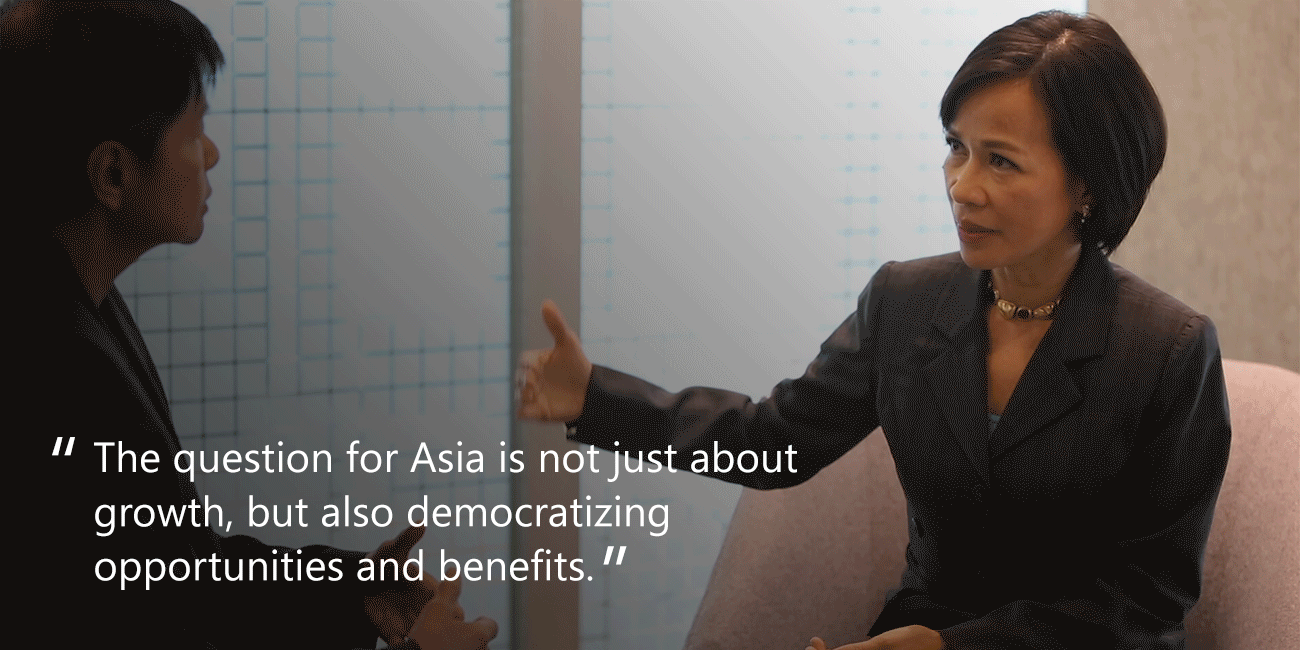
But technology can be a double-edged sword. What happens when its capabilities and benefits are not available to everyone? How do we ensure its opportunities are universally accessible?
Asian economies have enjoyed decades of strong expansion, but Tuminez argues passionately that this growth has been uneven – with inequalities surrounding gender, disabilities, and access to education.
Governments, the private sector and non-profit organizations must work together to ensure that these inequalities are addressed, she says.
“To participate and thrive in this new digital world, Asian countries must put in place the right foundations that will lead to an inclusive environment. We need policies to ensure that technology helps solve real problems, and that its benefits are spread more evenly across all levels of society. This is also the crux of our own sustainable growth philosophy of not leaving anyone behind. This new industrial revolution should not be just for the affluent and well-educated or those born in wealthy countries,” Tuminez stresses.
What does inclusive growth mean for Tuminez? She sees five factors. First, people must be digitally literate so they can understand technology and use it safely without falling prey to cybercrime and other nefarious activities of the internet’s underworld. Secondly, there must be affordable internet access so people can harness technology to their advantage. Thirdly, next generation skills in big data, analytics and other emerging technologies must be available to everyone so they can get good jobs. Fourthly, the disabled must be empowered with technology to enable them to live full lives. Lastly, all businesses should have access to the same technology regardless of their size.
Tuminez says new technologies are already addressing real life problems. She points to one example in the Indian state of Andhra Pradesh where an app can tell village farmers via their mobile phones when it is best to sow their crops, based on data analytics looking at weather, soil, and other factors.
Some progress is being made, but there are still major challenges – such as a lack of educational opportunities for people in many Asian rural areas. “You can go to a remote island in the Philippines or Indonesia and you will hear people say, ‘Oh, after 3rd grade, there’s nothing here unless we move to the city.’ Since they are farmers, they can’t move to the city, their education ends at 3rd grade. This will be a growing social problem because people cannot improve themselves without education,” says Tuminez.
Through programs such as the Affordable Access Initiative, Microsoft is working with various governments and partners in the region to provide educational resources, especially in the rural areas. For instance in Indonesia, it is supporting a digital learning solutions provider called Kelase to bring online content, as well as collaboration and productivity tools, to students and teachers in villages. Microsoft has also awarded a grant to the WiFi Interactive Network (WIN) in the Philippines to spread the availability of internet access in rural areas by tapping TV Whitespace technology.
“These initiatives are exciting because they will make quality education available to children who live deep in the provinces and rural areas. Education empowers people to have skills, allowing them to be more responsible for their own fate,” says Tuminez.
Looking ahead, Tuminez is optimistic and believes Asia’s booming young population differentiates it from the rest of the world. With a high proportion of millennials and digital natives, she thinks the region can embrace emerging technologies, such as mobile and the cloud, for the 4th Industrial Revolution. This will empower people to solve many of their own problems through technology, resulting in greater prosperity for society and businesses – and that will ultimately lead to greater stability in the region.
Bridging the gap through digital literacy
“I tried pre-med as a major in college, and we were dissecting small animals and moving towards bigger ones. When the professor asked us to dissect a cat and to find our own cat to dissect, I refused. After that experience, I thought, ‘I really should try something else. How about languages? How about I try some French and Spanish?’ says Tuminez, recounting how she uncovered her passion for learning new tongues. “I found that I was quite good at it and I enjoyed it and now I speak six languages, including English, Russian, Ilongo, French, Tagalog and Spanish.”
With the advent of the 4th Industrial Revolution, Tuminez sees coding as a new universal language of the 21st century.
Learning how to code can not only complement, but also develop other important fundamental skills, such as problem-solving and creative thinking – skills that are critical for succeeding in the digital economy. Digital literacy is particularly relevant in Asia – which comprises 60 percent of the world’s youth population.
Picking up new skills and upgrading should be the new norm, and millennials seem to be embracing this notion well, Tuminez observes. She looks to her own 21-year-old daughter as a reflection of a generation keen on chalking up life experiences.
“She left Columbia University in the U.S. after just a semester to learn permaculture farming in the Philippines, Thailand, Nepal and India, to knit and sell her knitting, be an au pair in Suzhou and Hawaii, apprentice in beekeeping in Canada and get certified in CPR in Vermont. Her secret weapon is her smartphone, which she uses to search for new jobs and learn new skills,” Tuminez shares. “When I talk to her now, I’m actually learning from her. I’m no longer telling her what to do because she’s actually deploying technology and new modes of learning.”
In this vein, the onus is on everyone to equip themselves with relevant skills. Reskilling can take many forms; someone who has an MBA or law degree, for example, can sign up for a coding course which can lead to a higher salary, explains Tuminez.
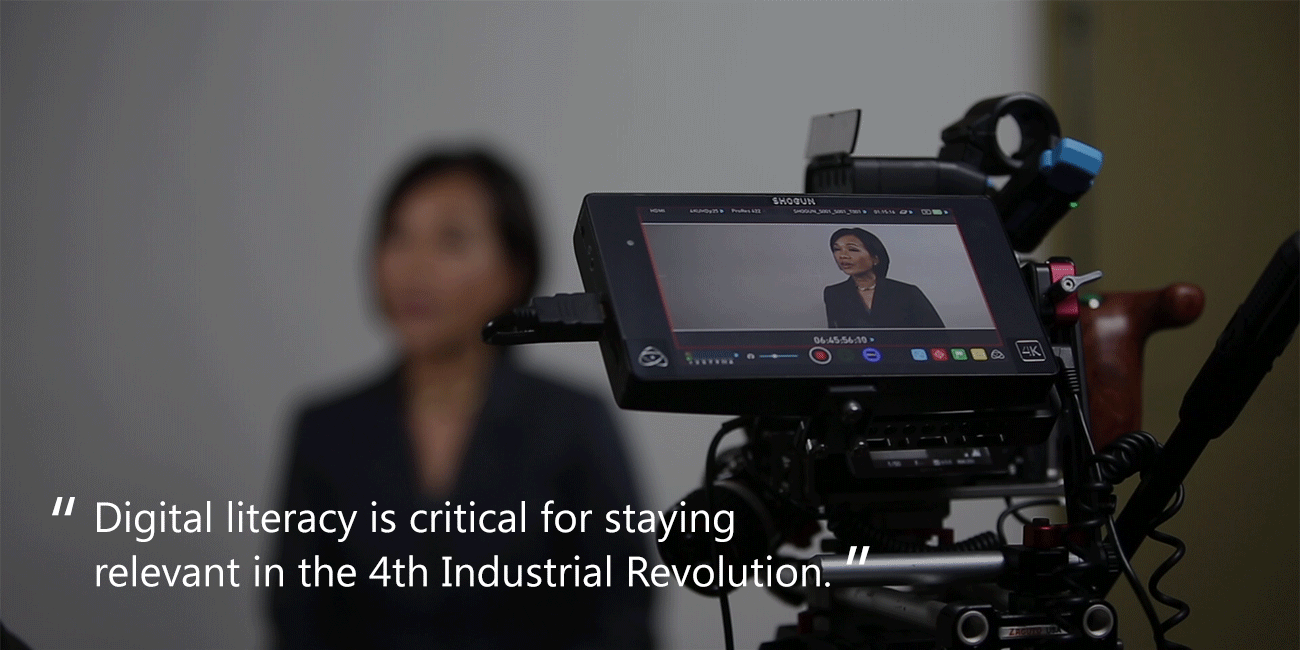
“Providing access to quality education is a great way to build a society with inclusive growth. Governments and the private sector can play their role by trying harder to help those who do not have access or cannot afford it,” she says.
Reskilling is already a top agenda item for many countries in Asia. In Singapore, for example, Microsoft and LinkedIn, along with the Lee Kuan Yew School of Public Policy and public agencies, are collaborating on a study to identify the skills gap in the local workforce through big data and analytics. This is aimed at addressing the expected rise in the mismatch between skills and jobs amid digital disruptions across various industries.
The importance of digital literacy for the workplace of tomorrow is also increasingly being recognized across Asia. Many countries have partnered with Microsoft under its global YouthSpark program, which encourages youths to learn computer science and empower them to achieve more in the digital economy.
For example, for juvenile prison inmates in Malaysia, picking up coding is a chance at a fresh start. “Students who pass get a certificate. By giving digital literacy and skills training, this public-private sector collaboration helps former delinquents to increase their chances of successfully reintegrating into society and start life anew,” shares Tuminez.
In Vietnam, disadvantaged youths in fishing villages along coastal areas can now get easier access to learning facilities through a project called the Enabling Boat. A vessel functions as a mobile classroom providing underserved communities with access to resources and training related to ICT and computer science, as well as environmental conservation. The project aims to help them adapt to the digital economy and improve their livelihoods.
Over in Japan, Microsoft partners with a non-profit organization called iLeap to provide training in leadership and digital skills in the U.S. for visiting groups of less privileged youth. They then get the chance to give back by working at NGOs at home and making use of their new technology skills.
“When we look at the incredible transformation that digital technologies are driving in our economies and societies, we should not ignore the disruption these technologies also bring and the skills that everyone, especially youths, require for future jobs,” says Tuminez.
Globally, Microsoft supports the United Nation’s Sustainable Developmental Goals which aims to tackle some of the toughest problems worldwide by 2030, particularly in the areas of government, public safety, jobs, gender equality, national security, health, education and building next-generation cities. This is particularly critical for Asia, where these challenges are compounded by factors such as rapid urbanization and declining productivity.
Technology can play a key role in solving these issues, but governments must first develop strategies and well-defined policies. Then they can invest smartly, especially in education. “While technology can help, it is just a tool. Teachers need training to properly optimize technology for learning – because they are the single most critical factor. If they are afraid of technology, then their students lose out,” says Tuminez. “So much more can be accomplished in education when governments understand how technology can empower students, parents, teachers, and administrators. The results will speak for themselves, as we have already seen in many places.”
“Digital literacy is critical for everyone to participate meaningfully in the 4th Industrial Revolution, as new skills are needed to match the rapid pace of technological change in the digital economy,” she explains. “Relearning and upskilling will be the norm from now on.”
Democratizing technology for an inclusive revolution
The 82-year-old lady reads an instant message on her smartphone sent by her daughter, Dr. Astrid S. Tuminez, but she does not know how to type on the screen to reply. Instead, she writes her response on a piece of paper, takes a photo of it, and sends it back.
“That way I can read my mother’s instant messages. That may not be the usual method to use the technology, but I still feel that my mother has been empowered,” Tuminez says.
Young or old, many people, and even businesses, fear that the fast pace of digital disruption will displace the way they live or work. This fear must be overcome if new technology is going to be used successfully, Tuminez says, adding that wide access to technology is also critical.
“At the heart of current technological advances is cloud computing, which is powering the 4th Industrial Revolution. The key to economic success is that such technology must serve all communities, including the poor and the disadvantaged. Technology should not benefit only a select few like the wealthy or developed segments,” she adds.
“Right from the start, governments must have a rational and logical pro-cloud policy framework encompassing four elements, namely infrastructure, next generation skills development, trusted computing, and leadership. This helps to ensure that all sectors of society, especially the underserved, will get access to cloud computing and its advantages.”
One example is in Myanmar, where technology is transforming lives by allowing small businesses and micro-enterprises to “bank in the middle of nowhere,” shares Tuminez.
For many villages in remote locations, there are no ATMs and bank branches because of the substantial investment in infrastructure and hardware that such services require. This leaves more than 70 percent of adults in a country of 50 million people without formal access to credit or other financial services.
However, through secure cloud computing enabled by Microsoft Azure, bank officers can now travel to even the most remote locations in the country to facilitate loans to micro-enterprises, opening up business opportunities for villagers.
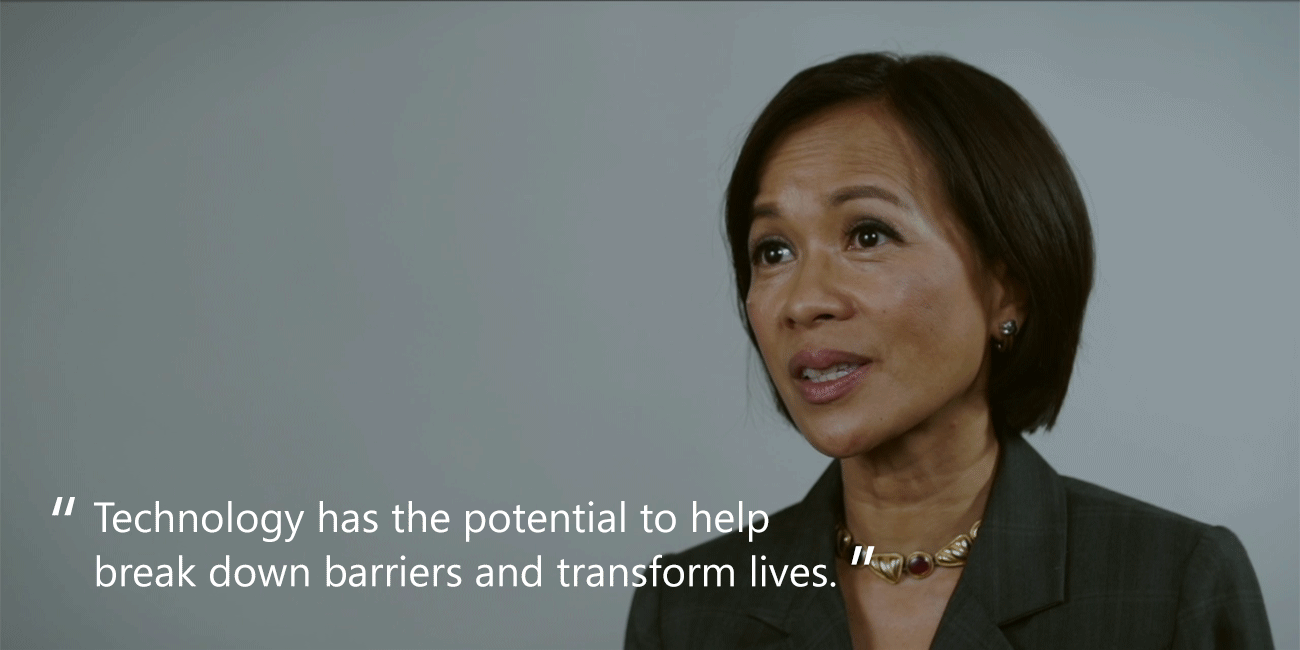
Tuminez points to the Seeing AI app, which is designed for the blind and low vision community. The app uses artificial intelligence and the phone’s camera to perform a number of useful functions including the reading of documents, identifying products at the supermarket, and recognizing people based on their faces.
“This technology gives the visually impaired hope, allowing them to work as professionals, or just to function in everyday life”, she adds.
The M-Powered platform, active in Thailand, Malaysia, Indonesia and Vietnam, is another instance of technology being leveraged to empower the disabled and other marginalized groups. Through a partnership between the public and private sector, the M-Powered portal helps users pick up skills relevant to the digital economy and, eventually, qualify for jobs. Besides a range of e-learning modules, users will also get access to online and in-person mentoring and job listings. In Malaysia, where the government has a declared policy to have at least 1% of civil service jobs go to People with Disability (PWD), the M-Powered portal will help prepare a pool of potentially qualified workers that can fill the government’s need.
Microsoft has partnered with Genashtim, an online tech support business and a Certified B Corporation, to design, build and launch most of the M-Powered portals. Interestingly, 90% of Genashtim’s employees are disabled, including those who are blind, deaf or wheel-chair bound. They are part of its growing workforce. The brainchild of Thomas Ng, Genashtim proves that PWD, through their own strength, talent and persistence, can be successful professionals living full lives and contributing to their families and countries.
The LV Prasad Eye Institute in India is another example of technology, especially the cloud, being used for public good. The institute has treated over 20 million patients with cataracts, which is a leading cause of blindness. It uses Microsoft’s Azure cloud platform to both store and analyze data to drive clinical interventions for pre-emptive care. Through the digitization of medical records, information such as socio-economic data can be used to pinpoint the required procedures more effectively and improve patient outcomes.
The 4th Industrial Revolution has also cast a spotlight on technology’s role in the push for gender equality. According to a study by the World Economic Forum, the impact of the digital economy is likely to be disproportionately negative for women. Knowing this, Tuminez is passionate about ensuring women having equal access to opportunities.
“There is often a misconception that technology and careers related to science, technology engineering, and mathematics (STEM) are only for men and mainly involve engineering work. But this isn’t true,” Tuminez explains.
One of the first steps is to expose young girls and women to coding, and inspire them to pursue STEM education so that they develop confidence and interest in these subjects. They will then be more likely to pursue, or consider, a career in the science and tech industries, she believes. In Myanmar, for example, Microsoft works with the Myanmar Book Aid and Library Preservation Foundation to train young women, aged 16-20 and affiliated with libraries throughout the country, in digital literacy and technology. In Cambodia, Microsoft supports Passerelles Numeriques, which trains young women and men for two years in technology, English and values. When they graduate, they have a 100% employment rate.
Technology has the power not only to transform lives, but also give hope and even protect vulnerable populations.
In China, it is being used to help parents find their missing children, of which there are tens of thousands in the country. “We had a recent case, where a father nearly four years ago lost his then 14-year-old son, who had Down syndrome and was unable to speak. They were in a restaurant, the father went to use the bathroom, and, when he returned, his son had disappeared,” shares Tuminez.
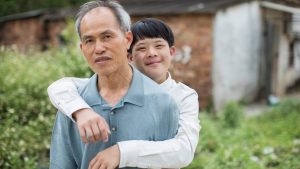
It was an agonizing search for the father, who eventually turned to Baby Come Home, a leading nonprofit organization dedicated to finding missing children. The NPO worked with Microsoft, which had developed an application called Photo Missing Children, or PhotoMC – powered by its publicly available facial recognition technology.
Baby Come Home used a photo the father provided to scan a government database of 13,000 images of children living in shelters across the country. Within seconds, a list of 20 possible matches were found, leading eventually to the happy reunion of father and son.
Tuminez believes there is a role for everyone to play in democratizing technology so that all communities can access its benefits and opportunities.
“Businesses, governments and non-profit organizations must come together with a shared vision, relentless passion, and pragmatic thinking to help improve the human condition. Only then will it be possible to drive more inclusive and truly shared growth in Asia,” Tuminez says.
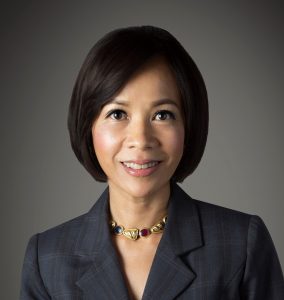 Dr. Astrid S. Tuminez
Dr. Astrid S. Tuminez
Regional Director, Corporate, External and Legal Affairs,
Microsoft Southeast Asia
Based in Singapore, Dr. Astrid S. Tuminez is responsible for driving government relations, corporate citizenship, as well as business and regulatory initiatives in the region. She is also an accomplished global speaker and widely published author. In 2013, Tuminez was selected as a “Top 100 Global Influencer” by the Filipina Women’s Network of the United States. She has held leadership, consultancy and research roles with organizations such as the Lee Kuan Yew School of Public Policy, US Institute of Peace, AIG Global Investment Group, Carnegie Corporation of New York, Council on Foreign Relations, the World Bank, and Bank of Philippine Islands.
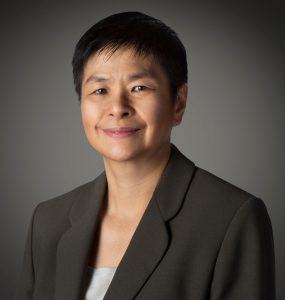 Grace Chng
Grace Chng
Grace Chng is among Singapore’s most senior tech writers, with wide experience setting up and managing editorial teams in the city state and across the Asia Pacific region. She was the key tech writer for Singapore’s national broadsheet The Straits Times for over two decades. While there, she co-founded and edited the technology section, Computer Times (which later became Digital Life), for nearly 19 years. She has interviewed many of the world’s top tech leaders, including Apple’s co-founder Steve Jobs, Microsoft’s co-founder Bill Gates, Airbnb’s co-founder Nathan Blecharczyk, Catcha Group’s chairman Patrick Grove, and Lazada’s CEO Maximilian Bittner.





